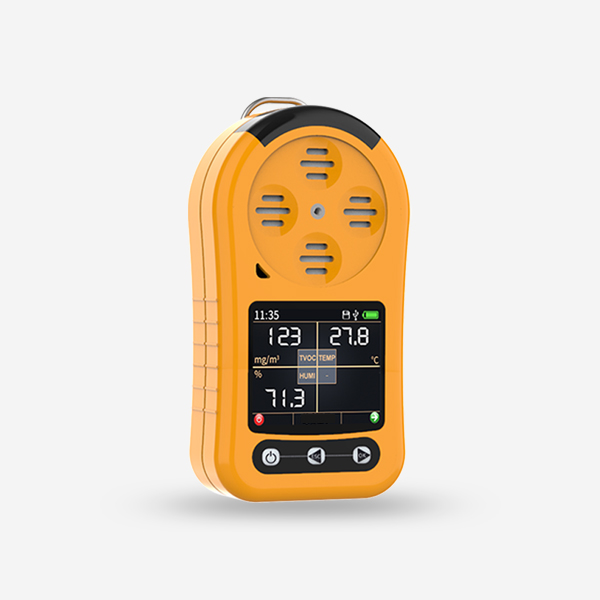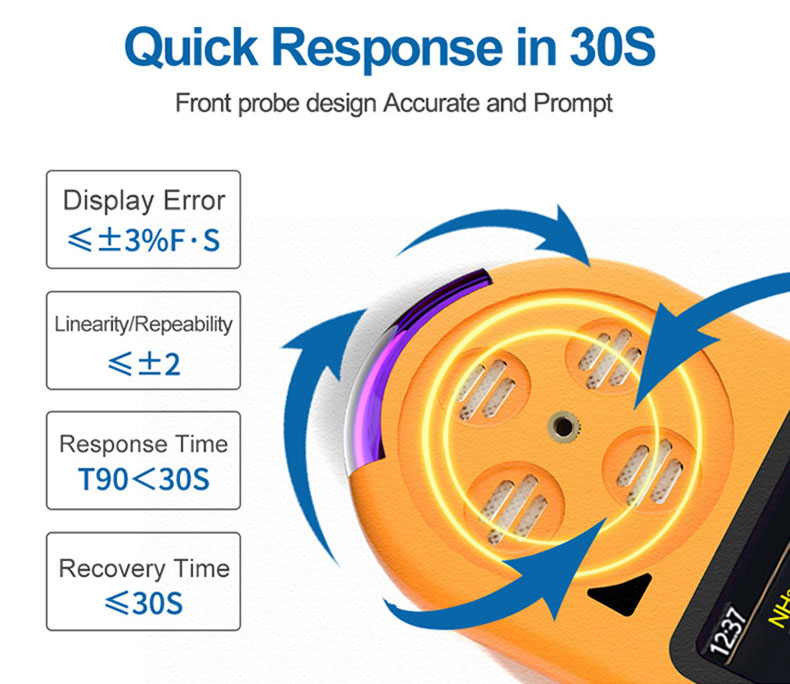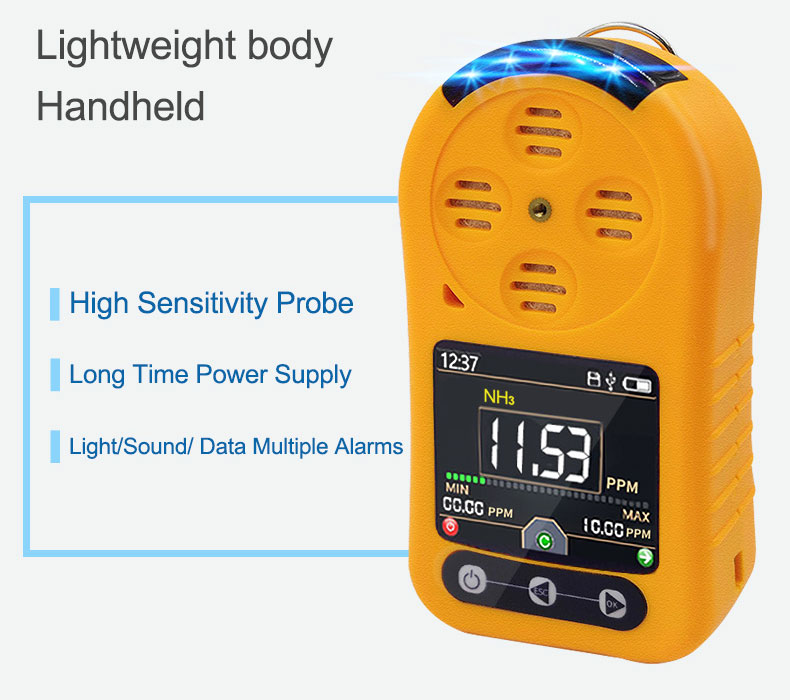To ensure comprehensive monitoring and protection against multiple hazardous gases, 4-in-1 gas detector have become valuable tools. These versatile devices combine the capabilities of four different sensors, enabling simultaneous detection of multiple gases. This article explores the role and importance of 4-in-1 gas detector in revolutionizing industrial safety practices.

The role and importance of 4-in-1 gas detectors
Simultaneous Detection of Multiple Gases:
A significant advantage of 4-in-1 gas detector is their ability to simultaneously detect and monitor multiple gases using integrated sensors. These devices can monitor a wide range of gases, such as combustible gases, oxygen levels, hydrogen sulfide, and carbon monoxide. Simultaneous detection ensures comprehensive monitoring, allowing workers to be alert to the presence of multiple hazardous gases, which is crucial in high-risk environments.
Enhanced Safety and Risk Mitigation:

By combining four sensors into a single device, 4-in-1 gas detector offer enhanced safety and risk mitigation capabilities. Workers no longer need to carry multiple devices or switch between different sensors, simplifying the gas detection process. The ability to monitor multiple gases at once increases efficiency and enables prompt responses to potential hazards, reducing the risk of accidents, injuries, or fatalities in industrial settings.
Real-Time Monitoring and Alarms:
4-in-1 gas detector provide real-time monitoring of gas concentrations and trigger alarms when predetermined thresholds are exceeded. The built-in sensors continuously analyze the surrounding air, instantly notifying workers if gas levels reach dangerous concentrations. Real-time monitoring and alarms allow for immediate evacuation or implementation of appropriate safety measures, minimizing the potential impact of gas-related incidents.
Data Logging and Analysis:

Many 4-in-1 gas detector are equipped with data logging capabilities, enabling the collection and analysis of gas concentration data over time. This feature aids in identifying patterns, trends, or recurring gas-related issues. Analysis of data logs can inform decision-making processes, improve safety protocols, and facilitate preventive measures to mitigate future risks. The ability to analyze historical data enhances overall safety management in industrial settings.
Versatility and Adaptability:
The 4-in-1 gas detector ADAPTS to a variety of operating environments. These devices are usually robust, compact, and easy to transport. We usually use gas detectors in oil and gas, mining, manufacturing and other industries.
Cost Efficiency:
Utilizing 4-in-1 gas detectors can lead to cost savings compared to purchasing separate devices for each gas type. These multi-sensor detectors eliminate the need for multiple units, reducing equipment costs as well as maintenance and calibration expenses. Additionally, workers require less training on the operation and maintenance of one device, saving valuable time and resources for employers.
Conclusion:
4-in-1 gas detector by offering simultaneous detection of multiple gases, enhancing safety and risk mitigation, providing real-time monitoring and alarms, enabling data logging and analysis, promoting versatility and adaptability, and offering cost efficiency. By utilizing these versatile devices, industries can ensure comprehensive gas monitoring, minimize risks, and protect workers’ health and safety effectively. 4-in-1 gas detectors play a crucial role in creating safer work environments and fostering a culture of proactive safety practices across various industries. As technology continues to advance, these detectors will remain invaluable tools in enhancing industrial safety and preventing gas-related incidents.